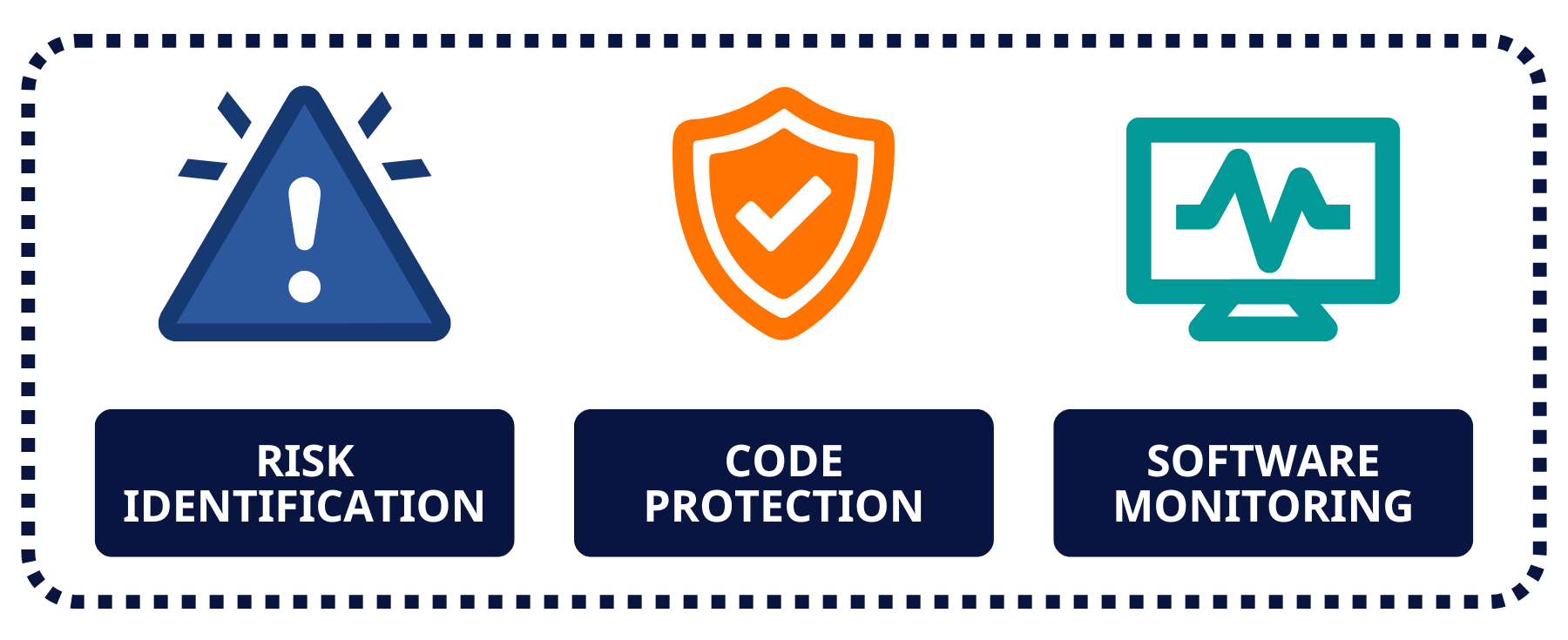Ensuring Resilient Device Security through Embedded Systems Protection
Secure embedded systems with RunSafe Security’s advanced solutions. We integrate cutting-edge technologies to fortify against cyber attacks, deploying proactive defense measures for uninterrupted operations. Our security frameworks evolve as threats evolve, providing peace of mind and operational continuity.

Fortifying Embedded Systems Against Memory-Based Exploits
RunSafe protects embedded systems with cutting-edge technologies and robust strategies. Our approach identifies risk in your software, protects code at runtime, and monitors software crashes for code quality issues and indicators of compromise. By disrupting potential attack vectors and fortifying system architecture, we effectively mitigate risks and enhance overall security posture.
By protecting against known and unknown vulnerabilities and denying the building blocks of zero days, we prevent future attacks by eliminating an entire class of vulnerabilities.
“From our perspective, adding RunSafe means we have more opportunity to shrink the attack surface and reduce overall risks for our customers since security is now already built into our product.”
Enhanced Device Resilience
Boost device resilience with RunSafe Security’s proven protection strategies, safeguarding against cyber attacks.
Proactive Threat
Defense
Stay ahead of emerging threats with proactive defense measures for robust software protection.
Streamlined Security Integration
Fortify systems against know and unknown vulnerabilities with proactive defense measures.

Automated Memory Randomization, Function Relocation, and Vulnerability Monitoring
Mitigate emerging vulnerabilities in embedded systems with RunSafe Security’s proactive defense mechanisms, which leverage memory randomization and function relocation to deny attackers deterministic control over software weaknesses. By integrating seamlessly into your CI/CD pipelines, RunSafe automates security hardening for in-house, open-source, and third-party binaries, ensuring robust protection from build time to runtime.
Advanced detection and response capabilities, including runtime monitoring for memory corruption and crash diagnostics, deliver continuous protection. Monitoring vulnerabilities ensures proactive threat detection and maintains operational integrity against both known and unknown exploits.


Seamless Integration and Deployment
Seamlessly integrate RunSafe Security Platform in less than one hour into existing embedded systems via streamlined processes that prioritize compatibility and minimize disruptions to enhance overall security measures. Our approach incorporates advanced deployment strategies and meticulous planning, ensuring robust protection throughout all implementation stages.
We provide comprehensive updates, regular maintenance, and adaptive security measures to fortify against the dynamic landscape of security threats, thereby safeguarding critical infrastructures with resilience and efficiency.
Latest Resources
Safety Meets Security: Building Cyber-Resilient Systems for Aerospace and Defense
In aerospace and defense, the line between safety and cybersecurity has disappeared. As aircraft and defense systems become increasingly software-defined and network-connected, the same architectures that deliver speed, agility, and capability also introduce new...
The RunSafe Security Platform Is Now Available on Iron Bank: Making DoD Embedded Software Compliant and Resilient
Anyone working in software development in the Department of War over the past five years has seen the requirements landscape shift significantly. From the introduction of SBOM mandates to the Software Fast Track (SWFT) initiative launched in May 2025, the DoD is...
From Black Basta to Mirth Connect: Why Legacy Software Is Healthcare’s Hidden Risk
Key Takeaways: Legacy medical devices running old code create growing cybersecurity and patient safety risks Ransomware attacks on hospitals show how downtime directly impacts clinical care Security transparency and SBOMs are now key to winning healthcare procurement...
Ready to Get Started?
RunSafe provides comprehensive embedded system protection by securing software at build time, preventing memory-based vulnerabilities and ensuring continuous protection without impacting system performance or requiring code changes.


